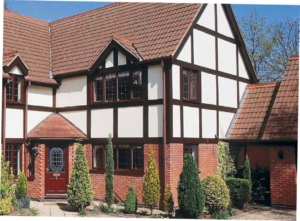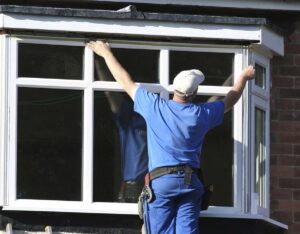What's The Job Market For Secondary Glazing Installers Professionals L…
페이지 정보
작성자Leopoldo Fanny 댓글댓글 0건 조회조회 28회 작성일 25-03-04 11:17본문
 Do I Need Planning Permission to Install Secondary Glazing?
Do I Need Planning Permission to Install Secondary Glazing?Secondary glazing can be put in within the frame of the existing one to block out outside noise and cut down on energy bills. It's perfect for old homes and listed buildings where windows aren't an option.
It's a great solution for damp buildings too However, it should only be used after other issues have been addressed to prevent draughts depriving the building of vital airflow.
Do I require a planning permit?
Changing windows is one of the most common home improvement projects that people undertake. However, homeowners may be concerned about whether or not they require planning permission to install new windows. If you're replacing old windows with the same and the work doesn't change the appearance of your property, you don't need to apply for Secondary Glazing Installers a planning permission. It is best to consult with your local authorities prior to embarking on any home improvement project.
The good news is, neither the installation of secondary glass or the draughtproofing of existing window requires permission from the planner. The addition of glass to existing windows will not alter the appearance of the building, or the size or shape. It is a convenient and cost-effective way to improve the thermal insulation of older buildings.
While secondary glazing isn't as efficient at keeping heat in your home as double glazing, it does an excellent job of stopping air leakage and helping to keep your heating costs down. It also helps reduce noise pollution, which makes it an ideal option for homes that are located in urban areas, or near airports and train stations.
In certain situations you may have to seek permission to have windows replaced or draught-proofed in the event that they are part of a listed structure or in a conservation area. If this is the situation, it is essential to have detailed drawings of the design that are drawn by an architect with a good reputation practice to demonstrate how to install double glazed windows the proposed changes are compatible with the style and style of the building.
If you reside in a period property, the best way to improve the thermal insulation of your home without compromising the appearance of your original windows is by using secondary glazing. It's similar to the original window, but it is more energy efficient and decreases noise pollution. Furthermore, it's simple to install and can be removed at any time.
Can I Install It Myself?
If you're a seasoned DIYer and your house has suitable windows and doors, it might be possible for you to install secondary glazing yourself. This isn't a great alternative for those who have no experience with window installation.
The second glazing process entails the precise installation of a second layer of glass inside the windows that are already in place. This provides thermal and acoustic protection, as well draught control and condensation control. It offers additional security, because it's a non-obtrusive barrier for potential intrusions.
Take measurements of the internal dimensions of the window frame. This will give you the measurements required to order a Secondary Glazing Installers glazing pane that's made-to-measure. You can buy a secondary glass kit that includes everything you require. They are available from hardware stores and online retailers, but they differ in terms of quality and features. The less expensive options could include sheets of glass made of plastic and magnetic strips, whereas the more premium products will feature authentic glass panes and seals.
Once you've ordered your secondary glazing, prepare the window by cleaning and sanding the edges to remove any paint and varnish. To prevent damage to your new panes it is important to remove any debris, dirt and dust. If your window frames have TV aerials or telephone junction boxes then you'll have to move them prior to installing secondary glazing. The majority of secondary glazing companies will be able notch the frame so that these cables can run through. They'll also provide you with cable clips to ensure an unsecure installation.
Install a piece of insulation on the glass's secondary edge when you are ready to put in. This will seal the glass. It's recommended to apply the tape to the outside frame. This will provide a more professional finish and make sure that the secondary glazing is securely fixed to the window frame.
Next, carefully position the second glazing against your existing window and mark the positions for drilling. Loosen the duct tape and then carefully drill the holes you've marked. After the holes have been completed, remove the duct tape. Use a damp cloth and wipe the frame.
Do I require an expert?
If you're planning on buying secondary glazing, you need to choose a business that is a member of professional organizations and has a good reputation. Review online reviews and be sure you read both positive and negative feedback, then ask your friends and family members for recommendations. It is also important to verify whether the company is registered with FENSA since this will ensure that any replacement windows or doors comply with the building regulations of England and Wales.
Secondary glazing is an affordable option that adds another thin window to the windows you already have. It's designed to cut down on the amount of energy used and also reduce noise pollution, making it a great choice for anyone looking to reduce their carbon footprint. The additional layer of glass helps reduce air draughts, and keeps your home warm and comfortable throughout the year.
With a wide range of finishes and colours available and a variety of finishes, you can find secondary glazing to suit your home perfectly. Our latest line of products comes with ultra-slim sightlines that ensure your new addition will not be noticeable from outside. Plus, they are easily opened and closed to allow for easy cleaning or fresh air into your property.
As opposed to double glazing window installation glazing, which entails installing two separate frames, secondary glazing is fitted to the inside of the existing window frame. It can be fitted with either face fixing or reveal fixing. Each type of option has its own audio and thermal benefits. A professional glazier will be able to help you decide which option is best for your needs.
Secondary glazing is the best option for homeowners, particularly if they live in listed buildings or conservation areas and are unable to put in new double-glazed windows. It's far cheaper than replacing the windows and can be easily removed in the future. It's also a great option to reduce condensation, which can result in damp and black mold and improve security, since it adds a second barrier to single-glazed windows.
Secondary glazing can be installed to fixed or sliding windows, and can be modified to fit most existing styles. However, it's important to remember that it's not as efficient as double glazing at insulating your home, because there's still an air gap between the primary window and the secondary pane.
What are the benefits of secondary glazing?
Secondary glazing is a great way to boost your home's sound and thermal performance. It can be fitted to windows that are already in place, and depending on the system selected it could also provide additional security. There are a range of options available that include sliding sash window and those specifically designed for uPVC frames. There are even systems that can be removed during summer to allow air to circulate more freely.
One of the biggest benefits of secondary glazing is that it creates an insulating barrier, preventing the loss of heat and cold draughts. This can reduce the cost of energy and make your home more comfortable. It's particularly useful for older properties that have inadequate insulation, or for newly construction homes where the frames are still in the process of settling.
In contrast to double glazing installer glazing, which demands the removal of your current window, secondary glazing doesn't involve drastic changes to your home. It's a more subtle option, which works with existing windows. It is either permanent or temporary according to your requirements.
A secondary glazing system can also reduce noise pollution. This is particularly the case if your property is located close to a busy road or flight route. The twin brush seals found in the majority of secondary glazing systems guarantee an extremely effective seal that can reduce noise by as much as 75 percent.
We suggest hiring an expert to install the secondary glass. This will ensure that the work is done correctly and it will provide all of the benefits that you want. If you attempt to install it yourself, it could result in gaps in the seal, incorrect fitting and even damage to your windows.
 If you are planning to install your own secondary glazing, it is important to wear the appropriate safety equipment, particularly when cutting glass. Before you begin, ensure that you have all the necessary tools and materials. Local companies can provide a more efficient service and quicker response times.
If you are planning to install your own secondary glazing, it is important to wear the appropriate safety equipment, particularly when cutting glass. Before you begin, ensure that you have all the necessary tools and materials. Local companies can provide a more efficient service and quicker response times.댓글목록
등록된 댓글이 없습니다.

